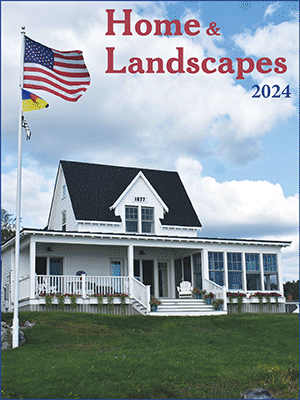Early maps offer clues to days of yore
 Gary Flanders poses with his daughter Elizabeth showing a copy of a 1755 French map, among the earliest to include Wiscasset, identified as “Witehasset.” Courtesy of Gary Flanders
Gary Flanders poses with his daughter Elizabeth showing a copy of a 1755 French map, among the earliest to include Wiscasset, identified as “Witehasset.” Courtesy of Gary Flanders
 Gary Flanders poses with his daughter Elizabeth showing a copy of a 1755 French map, among the earliest to include Wiscasset, identified as “Witehasset.” Courtesy of Gary Flanders
Gary Flanders poses with his daughter Elizabeth showing a copy of a 1755 French map, among the earliest to include Wiscasset, identified as “Witehasset.” Courtesy of Gary Flanders
Old maps are fascinating to study. Like old photographs, they give us a glimpse into the past, often showing earlier names for familiar places.
Gary Flanders, a former Wiscasset resident, has made it a hobby collecting old colonial maps of the Wiscasset area. By searching the Internet, he’s found several and purchased copies.
Flanders lives with his wife and two daughters in New Hampshire. He’s made it his mission to locate the first map to show Wiscasset. Flanders grew up on Federal Street, the son of Ann and the late George Flanders, a longtime Wiscasset selectman and school board member. One of the maps in his collection is of French origin, from 1755. It shows the Mid-Atlantic States and New England or “Nouvelle Angleterre” in its French spelling. A few of the places named are: “Frandfort” an earlier name for Dresden, “Richermon” (Richmond), the “Shepscut” (Sheepscot) River and “Witehasset” (Wiscasset).
Flanders told me he recently had the map enlarged to 30-by-20 inches and plans to offer a copy to the Wiscasset Public Library on High Street.
The library has a number of old maps on file, including one of colonial Pownalborough dated 1795, in the archives room. John S. Foye, a surveyor, drew the map; the Foyes were among the earliest families to settle in Wiscasset. The map shows the village surrounded by “Witcheafsett Bay.” The unusual spelling includes the Old English long “s” resembling the letter f. Westport Island is identified on the map as “Jeremy Squam Ifland.”
Another interesting map, drawn about the 1860s, shows the Wiscasset-Edgecomb area. Alexander Johnston, a leading Wiscasset citizen, sketched it, although not exactly to scale. This one contains depth soundings of the Sheepscot River at low tide. It also includes some unusual names for six tall hills surrounding Wiscasset. Because the trees have grown up all around, these hills are scarcely noticeable today. Johnston identifies them as “Cushman Mountain,” “Sevey’s Hill,” “Matson’s Hill,” “Sweet Auburn,” “Langdon’s Mountain” and “Taylor’s Mountain.”
Cushman Mountain off Birch Point Road is still known by that name today and is part of the Cushman Mountain Preserve maintained by Chewonki Foundation. As for Sevey’s Hill, it’s the highest point nearest the village and located off Route 1 where the transmission lines from the former Mason Station cross the highway. It was named for an early family of English settlers whose last name was Sevey. In colonial times a stockade was erected at its summit to protect the settlers against the French and Indians. No trace of this early fort exists today.
Taylor’s Mountain is an earlier name for Clark’s Point north of town. It can be seen upriver from the Davey Bridge. In the 19th century, William Taylor, a retired sea captain, lived here in a large home that faced the harbor. Further back in time the high hill was called Kane’s Point for its first English settler, John Kane. Legend says Kane brought the first English daffodils to America. The bulbs he planted beside his cabin continued to bloom every spring many years after both he and his homestead were gone.
Matson’s Mountain and Sweet Auburn are behind Churchill Street and Willow Lane. In Johnston’s time, Willow Lane was known as the “Richmond Road” since it carried travelers towards the town of Richmond. Sweet Auburn is behind the town’s 1813 historic Powder House off Churchill Street. On top of the hill is a round concrete water tank that’s no longer in use.
How “Sweet Auburn” got its name and who named it is a mystery. The name appears in a 19th century poem by Hannah Augusta Moore. Moore was born in Wiscasset in 1824 near Chewonki Neck. Her poem, “Last Pine of Sweet Auburn” is about her somewhat bittersweet return to her hometown. The Northern Monthly, a literary magazine, published her poem in 1864. A footnote identifies Sweet Auburn as a “mountain in Wiscasset, Maine.” As the story goes, she hiked to the top of the high hill that overlooks the village and was inspired to write her poetry.
Behind Sweet Auburn is Matson’s Mountain, another sizable hill. Its namesake, John Matson, was a sailor who was born in Denmark and came to America at the age of 5 around 1781. According to the Seaside Oracle, an early Wiscasset newspaper, when Matson died in 1870 he was nearly 90 and the town’s oldest resident. He’s buried in the Ancient Cemetery but you won’t find a gravestone there for him, because he died a pauper.
Langdon Mountain located near the end of Langdon Road was once a cow pasture. During World War II, a wooden tower was constructed at its highest point under the direction of the American Legion as part of the U.S. Army’s Aircraft Warning Service. Volunteers stood watch here 24/7 scanning the sky for enemy airplanes. Fortunately none were ever spotted. Nothing remains of the tower today.
Event Date
Address
United States





















